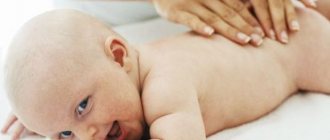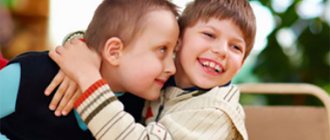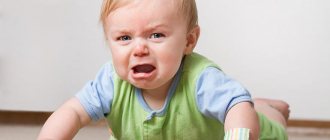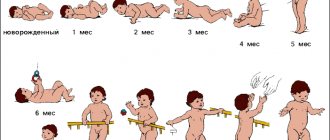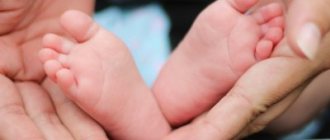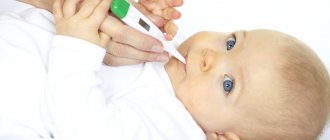Every parent closely monitors how their baby develops month after month. This is not only a reason to brag to idle neighbors, but also a desire to understand that the child does not have serious deviations: he acquires motor, speech, play and other skills on time. We are talking about the psychomotor development of the child. By detecting some signs of a lag in it in time, you can have time to compensate for a lot by older age.
What is psychomotor development?
This concept is very complex. It includes a large complex of various indicators. This is the improvement of reflexes, vision, hearing, motor skills, fine motor skills, active and passive speech, emotions, sensory perception, communication and socialization skills - at each age the leading lines of child development change. In other words, psychomotor development illustrates the degree of maturity of different brain centers at different stages of a small person's life.
Thus, at the age of up to one year, the baby’s reflexes are more important, at 2–3 years – speech skills and fine motor skills, at 4–5 years – skills of communication with peers and socialization in a group of children. However, it is assumed that at each subsequent stage of development the child systematically deepens and hones previously acquired skills.
Initially, all these skills are helped by the child’s family to develop. Then kindergarten teachers join them, and later school teachers. At the same time, it is important to constantly monitor not only the timeliness of the child’s mastery of certain skills, but also the ability to combine them with previously acquired skills. So, having learned to take a spoon, the baby should get used to scooping food into it and bringing it to his mouth without spilling. Only then can we consider that he has learned to use a spoon.
For the full development of the baby, it is important to have constant active communication with parents and other family members, his participation in everything that happens, and not just “tracking the process.”
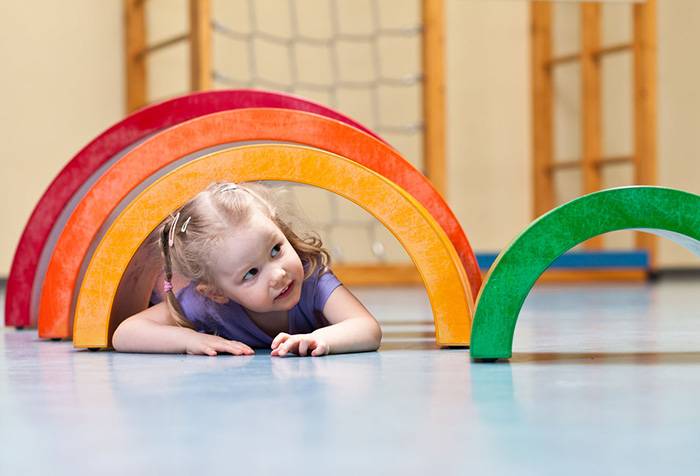
“You have everything to do, yes things to do...”
With the addition of a family, in the hassle of caring for a newborn, very often the eldest child is left out of work. All conversations, all the attention of guests, acquaintances, relatives is focused on the new family member. The older child is most often remembered only in extreme situations - in case of disobedience, bad behavior, etc. But such actions of a child are just the tip of the iceberg; the real reason lies elsewhere.
The fact is that the older child actually lost all his privileges at the time of the birth of the younger one and may have found himself an isolated member of the family. But uncomplainingly enduring hardships is a task beyond the capabilities of a child. The kid tries to be noticed and uses all available means to achieve this. Sometimes parents in such cases admit: “He constantly attracts attention to himself!” And indeed it is. It’s paradoxical, but the child is ready to endure even punishment in order to receive his share of parental attention, which with the birth of his youngest he needs more than ever.
Tatyana S.: “Antosha (1.5 years old) seemed to have been replaced. Always docile and calm, with the birth of Verochka he constantly whines, asks for something, behaves badly, we even punish him. It seems like he's just trying to attract attention to himself. The grandmother offers to take Antosha with her for a while. But I feel sorry for him. We almost stopped working with him after Verochka was born...”
Unfortunately, in families of the same age, it often happens that when the youngest child is born, the eldest is sent to the grandmother, nanny, or kindergarten for some time. On the one hand, the mother gets the opportunity to concentrate her energy on the baby, establish breastfeeding, and solve some everyday problems, of which there are many at this time. But how does the older child feel? A child at this age is not able to assess the state of affairs through the eyes of his mother, put himself in her place, or look at the situation “from the outside.” He perceives reality from the point of view of his “I”. And in this case, his impressions are clear: “Mom has no time for me now. She only cares about my brother. I was abandoned."
You need to try to give maximum effort and parental (yes, parental, not grandparents) attention to the eldest child. Situations when a mother works “on two fronts”—say, swaddling a baby while simultaneously repeating the count to ten with the older one—only partly solve the problem. Personal communication with the eldest son or daughter is very important. This can be playing together, or walking together, or going to the store, or anything, the main thing is that at this time you are not distracted by solving any third-party problems, and your attention as much as possible belongs to the older baby. In general, personal communication between parents and each of their children is the most important component of a harmonious co-existence in the family.
Main periods of psychomotor development
In modern pediatrics, it is customary to distinguish 6 main stages of psychomotor development of children:
- from birth to 1 month;
- from 1 to 3 months;
- from 3 to 6 months;
- from 6 to 9 months;
- from 9 to 12 months;
- from 1 year to 3 years.
The correct psychomotor development of a young child at each stage is influenced by many factors:
- genetic (the baby may be slightly behind his peers, having a genetic predisposition to this - his parents or grandparents also developed late);
- hereditary – the presence of hereditary diseases can cause a child to lag in development;
- environmental (an area with poor ecology is a risk factor for the birth of sick children who will lag behind generally accepted norms of development);
- complex pregnancy (maternal illnesses, infections, threat of miscarriage, fetal hypoxia) can also lead to difficulties in the future;
- difficult birth, especially with the use of stimulation or forceps, birth injuries often lead to problems with the health and development of the newborn;
- social environment (unfavorable environment, antisocial parents, constant stress);
- material and living conditions – lack of the most necessary things for a child (nutrition, educational toys);
- Insufficient attention to the baby from the parents, when they talk, play, and caress the baby little, often provokes psychomotor delays.
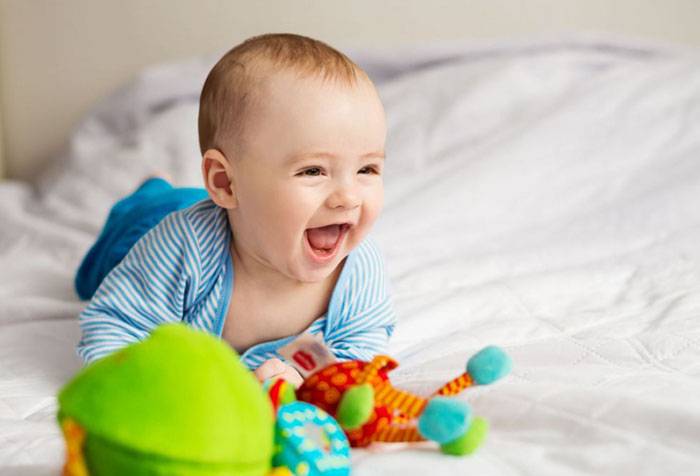
Mom feeds
Useful site about child development
Looking for an answer
As we are accustomed to, when any question arises, we rush to the Internet in search of information! We write a couple of words in the search bar - and here they are, millions of pages of answers that drag you in, forcing you to follow links and categories. The abundance of information is tiring, and sooner or later we discover one convenient and meaningful portal, where the information is presented in a clear manner, the design is done without any bells and whistles, and the material is presented competently and unobtrusively. A recent discovery for me was the site “I am your baby”.
I came to this blog by accident through a link from a social network and stayed for a long time. The author of the site, Anna Voronina, has collected a rich collection of information materials on the topic of child growth and development. Expectant mothers can get acquainted here with a description of the course of pregnancy from conception to birth: vivid photographs reflect intrauterine life, useful links and videos are provided.
The site focuses on mothers of a newborn child. Many sections on health, nutrition, and child development include detailed articles and informative photographs, accompanied by comments from experienced mothers and specialists. The style of presentation of the material is very important: there is a sense of care for the readers, there are no aggressive instructive notes, the information is presented simply and clearly.
This worries many mothers
I found the article “What to do if I constantly yell at my child” interesting. It gives specific advice on how a mother can cope with her emotions. But the most important idea of the article is that the mother, even if she lost her temper and yelled at the baby, should not reproach herself and endlessly feel guilty. This idea is close to me: right now I am studying the issues of psychological acceptance of oneself as a unique individual - for young mothers, self-acceptance turns out to be a real problem! The author of the article tries to help mothers get rid of feelings of guilt and at the same time advises them to constantly work on themselves in order to learn to manage their behavior.
General a suggests that every mother needs, while constantly worrying about her child, to at least sometimes remember about herself. On the site you can find useful materials about the psychological state of the mother and her health during pregnancy and the postpartum period.
Separate sections are devoted to the development of the baby (as follows from the name of the blog). A review of children's games and educational toys, books is presented, and recommendations are given on the use of sets of exercises for the child to master various important skills.
The pleasant appearance of the site, easy navigation - all this creates a positive mood among visitors.
Overall, I liked the site and am happy to recommend it to my readers.
Go to https://razvitie-krohi.ru/
To have articles from this blog sent to your email, simply fill out the form:
You can also read on this topic:
The child asks to be held - should he be indulged?
Mommy, don't cry!
Is it possible for a nursing mother to smoke?
In the first year of life
At each stage, the baby systematically masters new skills. This is especially noticeable in the first year of life, when progress is obvious even at intervals of several weeks.
- 1 month. The baby briefly fixes his gaze on a bright object and can follow it if it moves slowly. At sharp sounds he shudders. Can hold the head for some time while lying on the tummy. At this age, the baby begins to smile.
- 2 months. The child more confidently follows an object moving in front of his eyes. Turns the head towards the sound. He can hold his head upright for several minutes. An adult's address is greeted with a smile.
- 3 months. Focuses the gaze on an object in any position. Listens intently to different sounds. Lying on his tummy, rests on his forearms and bent legs. Reaches for a toy.
- 4 months. Most of the newborn's reflexes fade away, and hypertonicity of the hands disappears. The baby reacts to the appearance of his mother and may roll over onto his tummy. He can laugh loudly and turns his head in the direction of the sound. Examines his hands, can grab a toy with them and feel it. When feeding, supports the breast or bottle with its handles.
- 5 months. The baby distinguishes between relatives and strangers, understands whether they are speaking to him strictly or affectionately. Can stand with support, take a toy from the hands of adults, and pulls it into his mouth. It hums for a long time and actively.
- 6 months. The baby can roll over from his tummy to his back and crawl towards the toy. Sits with support, begins to babble, and can eat from a spoon. He moves the toy in his hands.
- 7 months. The child now sits and crawls more confidently. Shows an object in response to the question “where?”, can knock toys against each other, drink from a cup from the hands of an adult. He babbles for a long time with different intonations.
- 8 months. The toddler can sit and sit on his own, stand up holding a support, and walk with it. He tinkers with toys for a long time and actively pronounces simple syllables. Upon request, he can wave his hand and make “okay” gestures. Recognizes relatives from photos.
- 9 months. The baby can walk if held by both hands, repeats the syllables he hears, and fulfills simple requests: show him, give him. Responds to his name, uses gestures in communication.
- 10 months. The child can climb onto a chair or sofa and climb back down. Folds a matryoshka doll, an insert toy. Knows and shows different parts of the body on himself and other people. Pronounces the first simple words (mom, grandma, dad).
- 11 months. The baby can stand without support and tries to take a few “free” steps. Understands simple generalizations of objects (cars, dolls, balls). Reacts to the word “no”.
- 12 months. The baby pronounces about 8–10 words, understands about 100. Walks independently. Can use a comb and carry out simple requests (fetch, pick up). Can take a cup and drink from it, select objects according to their shape (for example, in sorters).
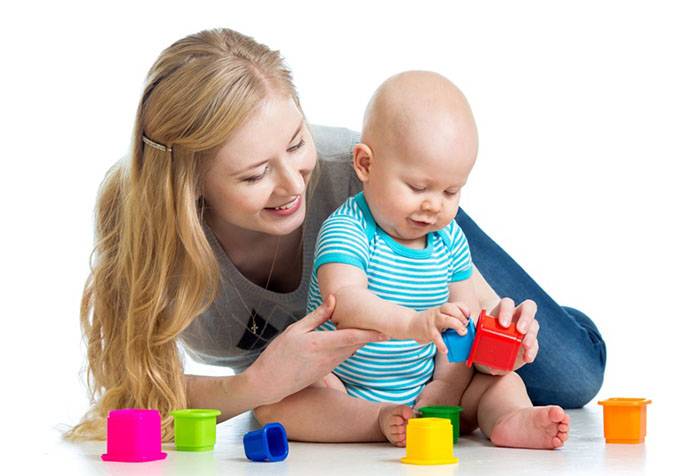
Ninth month
At the 9th month of a child’s life, the process of actively mastering the ability to stand at a support continues and the ability to sit upright is improved. Now the baby is already happily greeting you, standing in the crib or trying to walk along the wall, crawling around the room after you. Speed appears in movements. For a baby in the 9th month of life, it is not difficult to roll over in any position in the desired direction, to reach an object that is in the field of vision. Most children at this age are actively trying to master the ability to walk, so they often ask mom or dad to hold their hands.
In addition to actively mastering crawling and walking, in the 9th month of life the child actively develops thinking. He really likes games with his hands: “magpie-crow”, “ladushki”, etc. At this age, you can teach the baby to wave his hand when saying hello or goodbye.
At the 9th month, most children master the following skills:
- grab the object with 2 fingers. Gently moving the thumb and index finger towards a small object, the baby tries to grab it. This skill is called “pincer grasping” and is useful for developing fine motor skills. To improve it, you can invite the child to eat small pieces of food with his hands, play with small objects under the special supervision of his parents;
- ask adults for a specific item by pointing at it with a finger. During this period, the baby may begin to use certain sounds and syllables for certain favorite toys;
- drink from a cup yourself. It’s good if you can give up bottles and sippy cups at this age and invite your child to improve a new skill. At first, the baby will wet himself and drop the mug, but gradually he will learn to perform this action correctly and accurately;
- understand spoken speech. In the brains of boys and girls in the 9th month of life, an active process of creating images of objects and actions in combination with words occurs. The child begins to clearly understand simple phrases addressed to him;
- take off your socks while lying on your stomach.
The development of a child in the 9th month of life is rapid; every new day the baby shows new knowledge and skills and improves those already acquired. At this age it is advisable to start teaching the baby. By 9 months, the baby can successfully point to himself and other people with his finger the main parts of the body (arm, leg, stomach, head), try to imitate the sounds of commonly encountered animals (dog, cat, cow, etc.), recognize them and point with your finger in the book. The basis of classes with children of this age is the game format. While playing together, name and show animals, body parts, and household objects. In just a few lessons, the baby will remember their names and will be happy to show you his knowledge.
During the 9th month of life, boys will gain 400 - 600 g, grow by 1-1.5 cm, girls will gain weight by 400 - 500 g, grow by 1 - 1.3 cm. Normally, a child is in the 9th month of life should sleep 12 - 15 hours a day.
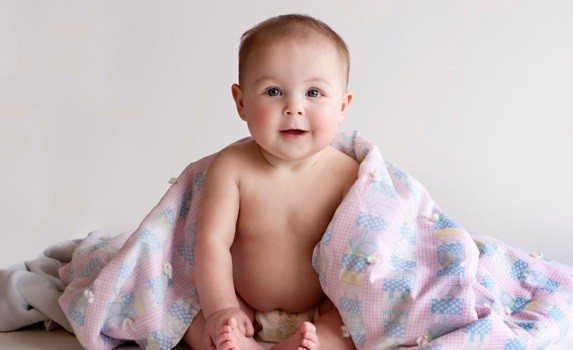
Baby 9 months old
Are there any deviations?
In the future, the baby continues to improve his skills. However, sometimes children may not develop according to the “general scenario”, but slightly ahead of their peers or behind them. How can parents know if everything is okay? At the end of the last century, pediatricians and neurologists began to use special assessment tables that collected average statistical information on most psychomotor indicators. The tables are compiled for children of early, preschool and school age in chronological order, they are informative and easy to use. Therefore, parents can also rely on them.
As an example, here is a table of the psychomotor development of children from one to 2 years old.
| Age | Development area | Indicators |
| 1 year and 3 months | Passive speech | The number of words understood is growing rapidly |
| Active speech | Vocabulary is growing | |
| Sensory development | The child can distinguish objects by size at intervals of 3 cm | |
| Games | Repeats familiar actions | |
| Movement | Walks actively, can squat, back away | |
| Skills | He eats liquid food with a spoon | |
| 1 year and 6 months | Passive speech | Can generalize objects based on significant features |
| Active speech | Uses complex words in communication | |
| Sensory development | Knows simple shapes: sphere, ball, cube, brick | |
| Games | Copies frequently repeated actions of adults | |
| Movements | Can step over obstacles (steps) with side steps | |
| Skills | Can eat liquid food with a spoon | |
| 1 year 9 months | Passive speech | Perceives a story from a picture |
| Active speech | Uses verbs, answers simple questions | |
| Sensory development | Distinguishes objects by size with a difference of 3 cm | |
| Games | Can build turrets and houses from cubes | |
| Movements | Can walk on a block about 20 cm wide, raised from the ground by 15–20 cm | |
| Skills | Partially able to put on simple items of clothing with the help of parents | |
| 2 years | Passive speech | Can understand a simple adult story about past events |
| Active speech | Uses verbs, pronouns, adjectives in speech | |
| Sensory development | Can match items to a sample, find similar and different | |
| Games | Reproduces a chain of simple sequential game actions | |
| Movements | Climb steps about 15 cm high in alternating steps | |
| Skills | Partially dresses himself, partly with the help of parents |
Parents can conduct tests periodically, checking the child’s skills at each stage with those shown in the table. If a child cannot cope with most of the points for his age, but does everything from the previous stage, there is no need to worry: most likely, we are talking about the individual pace of development. This happens quite often. You need to be wary if the baby does not complete most of the tasks from the previous age level, or from time to time parents notice deviations from the norm in the same indicators (lag in speech, or emotions, or the development of motor skills).
If you have older children, do not ignore the data from such tables, thinking that you already have enough experience. Each child develops according to his own unique plan. What the older ones could do, the younger ones may not be able to do at the same age, and vice versa. The table will help you clearly track the dynamics of changes occurring from stage to stage. Knowing the characteristics of the psychomotor development of children at each stage, it is easy to identify deviations.
And if something worries you, do not hesitate to visit a doctor. It is always much easier to fix a problem in the early stages.
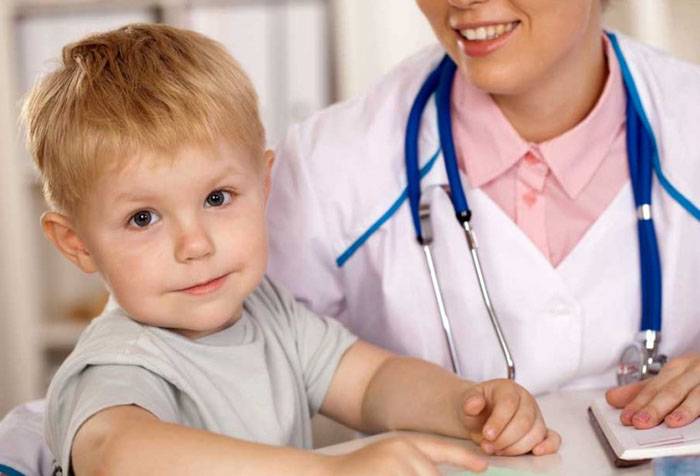
Development of a baby ru development of a child up to one year
- 1 month
In the first week of life, a newborn loses up to 8% of his birth weight, then his weight begins to increase. Around the 7th day, the umbilical cord remnant falls off. Until the 3rd week, the baby perceives only loud sounds, since the ears are covered with fetal fluid. By the end of the month, his skin gradually brightens and acquires a natural color. The baby's muscles are in what pediatricians call physiological tone, so the arms and legs are always bent, and the palms are clenched into fists. The child can see objects at a distance of up to 30 cm and turns his head towards the light. During this period, colic and regurgitation most often occur. The baby needs to be placed on his tummy, while he raises his head and holds it for a few seconds. In the first month of life, weekly visits to the baby by a pediatrician are mandatory. To communicate to parents about their needs, the baby cries and calms down when he is held. At a time he eats 80-120 ml of breast milk or its substitute - formula. Feeding frequency is approximately every 2 hours. The average weight gain is 1 kg, height gain is 2 cm. ...read more...
- 2 month
The baby is already making distinct sounds, purring and cooing. The tone of his voice changes. When he sees his parents, he smiles, begins to distinguish voices, and listens to conversations. During this period, he smiles for the first time, albeit unconsciously. In order for the baby to hold his head confidently, you need to lay him on his tummy more often. This same exercise will strengthen your abdominal muscles and help get rid of colic. Holds a rattle in his hand, shakes it, carefully watches the toys. He turns on his side and sleeps on it. Lying on his back, straightens his arms and legs. Pulls hands into mouth, salivating profusely. When crying, tears appear. It's time to develop visual skills by attaching a mobile to the crib. Daily walks in the fresh air are very important for a child’s health, and attention should also be paid to developing a sleep and wakefulness routine. During the second month of life, the child gains about 800 g and stretches a couple of centimeters. ...read more...
- 3 month
The baby is already able to sense the surrounding environment and sees more and more objects. He likes to be carried in a column so he can see more of his surroundings. Studying palms and fingers. Turns his head in different directions in search of the source of sound, clearly distinguishes the faces of those around him. Begins to distinguish odors. From this month, parents need to monitor their baby more closely, because he begins to roll over from his back to his tummy. Another achievement is that he already confidently holds his head while in an upright position on his arms or lying on his stomach. Now the baby will love the bright developmental mat that rocks the center. If you put a multi-colored toy in front of him, he will try to reach out and grab it on his own. Puts rattles in his mouth. The average weight gain is 800 g, height gain is 2 cm. ...read more...
- 4 month
The period of colic gradually passes, now the baby can sleep a little longer and wake up for feedings less often. Lying on his tummy, he tries to get up, leaning on his arms. He recognizes his mother among other people, smiles at her, and talks to her. Listens to music. Of particular interest is his reflection in the mirror. Can focus longer on objects or some process. Rolls over from back to side and onto stomach. Tries to roll over onto his back. Reaches for toys, takes a toy with both hands. Pushes off with legs and arms from the support. Lying on his back, he raises his head and presses his chin to his chest. If you pull him by the arms, he tries to sit down. He takes a toy and shakes it with one hand, reacting joyfully to the music that he likes. Actively tries to participate in the conversation, babbles individual syllables with varying strength. Weight gain – 700-800 g, height – 1-2 cm. ...read more...
- 5 month
The baby can easily roll over onto his side, from his stomach to his back and vice versa. Lying on his back, he raises his head to see more. He rests his feet on the bed and tries to stand on the “bridge.” Lying on his stomach, he stretches out his arms and legs straight, holding a toy with one hand. More and more surrounding objects arouse the baby’s interest, especially colored ones. Transfers toys from one hand to another. Watches a toy fall to the floor. Now he not only takes them in his hands and throws them, but also tries to pull them into his mouth. This may indicate that teeth will appear soon. The baby cries significantly less often, smiles and laughs more; he is interesting and funny. The appearance of a stranger can cause a negative reaction and even crying. Shifts his gaze from one present interlocutor to another. On average, a child gains 700 g and 1-2 cm in weight per month. ...read more...
- 6 month
The baby has learned to sit confidently without support, although he is not yet sitting down himself. Some children still make attempts to sit up on their own. Lying on his tummy, he leans on his outstretched arms and lifts himself up. With support, he leans on his legs and tries to stand. He tries to get up on all fours. Reaches distant objects. Selects the toy he likes from several offered to choose from. Examines hands and fingers. At this time it is time to introduce the first complementary foods. Most often it starts with steamed vegetables. The quality of stool changes, breastfeeding becomes less and less frequent. Taste preferences are developed. Drinks from a sippy cup. Turns around when his name is called. Begins to pronounce the syllables “ma”, “ba”, “da”. During the day he sleeps 2-3 times. During this period, teeth begin to erupt. This may be accompanied by pain, fever, increased salivation, and anxiety. Weight gain – 650 g, height – 1-2 cm. ...read more...
- 7 month
The baby likes to spend most of his time lying on his tummy. Begins to crawl, independently assumes a sitting position and maintains balance. Some children at this age already sit down confidently. The baby reaches out to his mother and asks to be picked up. He turns to those around him, calls them. The child no longer falls asleep after eating; he spends more time playing. Sits with a straight back, while feeding, spins in different directions, tries to evade. He babbles a lot and tries to imitate the sounds made by adults. He takes a rattle and knocks it on the surface. Holds a bottle. You can invite him to drink from a cup and try to hold a spoon. At this time, the two lower teeth erupt. This may cause discomfort when breastfeeding. He no longer gains weight as quickly because the nature of his food has changed and he begins to move more. Weight gain – 600 g, height – 1-2 cm. ...read more...
- 8 month
Dynamics of development from the point of view of doctors
If parents show their child to the pediatrician in a timely manner, he will discover possible problems during such visits. It is important to know that planned visits to the pediatrician up to a year occur monthly, from a year to two years - once every three months, up to 3 years - annually. During such examinations, the doctor not only evaluates anthropometric changes, but also pays attention to the correspondence of the baby’s level of psychomotor development to his age. By comparing the child’s skills with the table, the doctor can make a conclusion about timely, advanced or lagging development.
For example, in the first year of a baby’s life, a pediatrician may prescribe consultations with other specialists or additional examinations if the child is found to have:
- poor mobility, muscle flaccidity;
- sluggish sucking or complete refusal of the breast;
- decreased reactions to sound and light stimuli;
- indifference to toys, inability to play;
- scarcity or complete absence of emotions;
- delay in speech skills (for example, walking at 5–6 months);
- unexpressed reaction to parents or its complete absence;
- absence of division of people into relatives and strangers;
- problems with coordination, lack of manipulation with objects.
After examinations, specialists can make a conclusion about one or another degree of delay in the baby’s psychomotor development.
- Mild degree - the baby is no more than 3 months behind the norm.
- Average degree - a lag of 3 to 6 months.
- Severe – developmental delay of more than 6 months.
Depending on the severity of the delay, a scheme for further treatment, correction and rehabilitation of the child will be chosen. The success of these measures depends largely on how quickly deviations are detected. This is why it is so important to notice the onset of a problem in a timely manner.
Toys for children and educational games
Below is a list of toys that will be most useful for a one-year-old child.
- Cubes from which you can build a variety of buildings.
- A pyramid with a rod on which rings need to be strung.
- A sorter toy is a container with holes of different shapes. This toy is complemented by several figures that should be inserted into the holes. That is, the toddler will sort the figures depending on the shape of the holes.
- Cups of different shapes. The toddler can nest them inside each other or build buildings from them.
- Outdoor toys - a bucket, a shovel, a car with a body on a string, etc.
- Caskets and boxes. They are so fun to open and close again.
- Large soft toys that can be dressed, fed and put to sleep.
- Items for playing with water - watering can, water bowls, floating toys.
- Household items that your baby can play with, imitating you. For example, a children's phone, plastic dishes, a toy iron.
- Cardboard books with large pictures.
- Simple musical instruments - pipe, metallophone, tambourine.
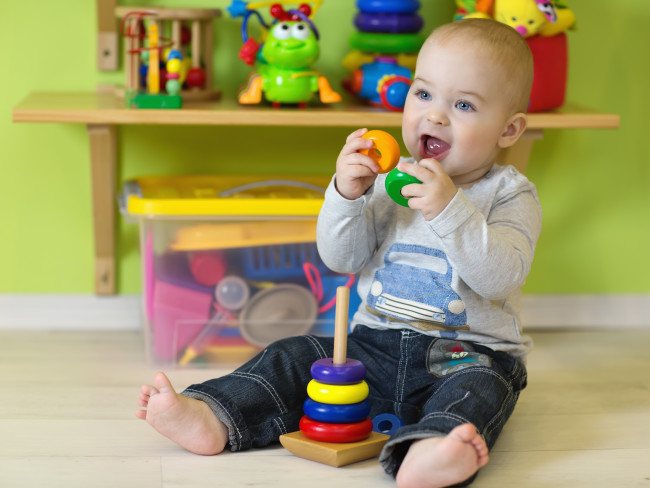
Sandbox game . Pour semolina into a wide pan. Place it on the floor in front of your baby. He will happily start fiddling with it and sifting through it with his fingers. When your little one gets tired of it, hide a small toy in the semolina. Ask your child to find it.
Game "Magic Bag" . Find an old bag. It can be a handbag or a travel bag. Before playing, thoroughly clean it of any dirt. Prepare safe household items. Place them in different pockets of your bag. Your baby will have a lot of fun undoing the clasps or buttons on the different compartments in the bag. This game helps develop fine motor skills.
Exercises to develop a child's ability to hold his head
In the motor development of a child in the first year of life, the timely formation of the ability to hold his head is of utmost importance. If a child does not hold his head up by two or three months, then a whole chain of unfavorable factors is formed: the development of visual perception and the vestibular apparatus is disrupted, and the ability to distribute the tone of the muscles that ensure the act of sitting is not developed. As a result, the entire pattern of motor development, which is closely connected with intellectual development, is distorted.
Therefore, exercises are offered that are specifically aimed at developing this ability of the child. The child is lying on his stomach. Place your hand on your child's chin and touch the soles of your feet with your other hand. In response, the child begins to push off with his feet and move forward.
- The child is lying on his stomach. Place one hand under his chin and the other under his stomach, and lightly pull the child forward. The child will make crawling movements.
- Place the baby in an upright position. Hold him by the hips in a sitting position, balancing so as not to upset his balance. The child will try to keep his head and torso upright.
- Position the child lying on his back. Take the child by the hands and pull him slightly towards you. He will try to pull himself forward with his hands.
- Wrap your arms around your baby's belly and hold him face down. The child will raise his head.
- You also hold the child in weight, but in an inclined-lateral position, grasping either the right or the left side. He will raise his head and straighten his legs.
- Place the child on a support in an upright position. In response, he will straighten his legs, torso, and raise his head. If you slightly pull him forward, he will make a stepping motion. Repeat each of these exercises for 3-4 minutes, wait patiently for a response, and do not try to help the child perform the necessary movements.
I found out about them later, perhaps if I had started using these exercises during these exercises, my girl would have held her head better at 2 months (Hellas loved to look at the ceiling, so she often threw her head back in a vertical position, which is why the pediatrician began to worry), but I I don't recognize. Yes, I don’t bother too much, at 3 months she did it quite well, although for some children such exercises still remain relevant.

